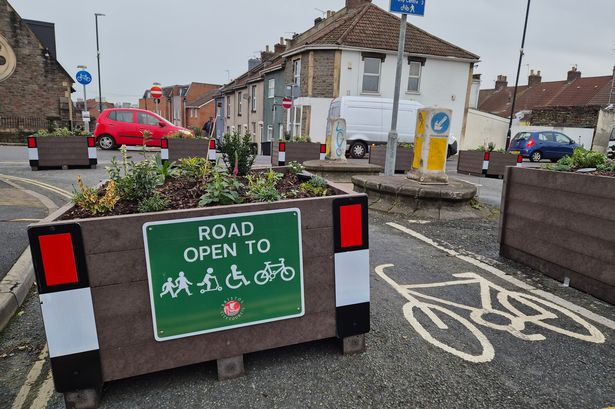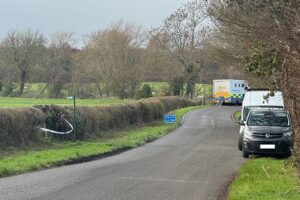
New details of the planned designs are due to be revealed in September
16:26, 11 Jul 2025Updated 17:30, 11 Jul 2025
Planters in the East Bristol Liveable Neighbourhood blocking cars(Image: Alex Seabrook)
Three particular problems were raised by members of the public about traffic in South Bristol ahead of an upcoming liveable neighbourhood project. Speeding traffic, problems with car parking, and a lack of safety for people cycling all received the most comments last summer.
Transport planners are now drawing up initial designs for the South Bristol Liveable Neighbourhood, based on that feedback. These will focus on fixing the issues people highlighted most, and include safer crossings, wider pavements and less pavement parking.
Bristol City Council has published an engagement report exploring the results of what people think about the area covered by the scheme, which includes Ashton Vale, Bedminster, Windmill Hill and Totterdown. An interactive map let people flag where specific traffic problems were.
A council spokesperson said: “The SBLN project aims to make streets healthier, more accessible and more pleasant by putting people first. Less traffic and slower vehicle speeds, streets will be safer and more accessible, and there will be greater consideration for pavement space and condition.
“Liveable neighbourhoods prioritise health so everyone can breathe cleaner air and have the opportunity to choose physical active travel options like walking and cycling and be safe doing so. They also allow for better spaces for communities, so people have calmer streets and green spaces to enjoy and play.”
The responses are already being used to draw up designs. The council will then consult the public on specific designs, which is due to start in September. Those designs could be changed based on the consultation this autumn, and then finally rolled out next year and early 2027.
Council chiefs are hoping to learn from the controversy surrounding the East Bristol Liveable Neighbourhood, with heavy criticism from some about a perceived lack of consultation. Although on the other hand, extensive changes to transport and the roads are never universally popular.
Last year’s engagement ran from July to October, with 11 drop-in sessions for residents, four for businesses, 13 school events, seven ad-hoc community events, and five online workshops. 28,000 leaflets were sent to homes in BS3 and BS4 in July, alongside 100 posters at events.
The map received 6,081 comments from 1,562 users. A survey also received 513 answers. Main roads like North Street, East Street, St John’s Lane and Duckmoor Road received a lot of comments, while Ashton Vale received only a few comments.
A heatmap showing where comments were left (Image: Bristol City Council )
Speeding traffic was the issue most commented on, with 791 comments. This was followed by parking problems with 771 comments, cycling safety with 625, and lack of crossings with 430. Other concerns included narrow pavements, poor accessibility for wheelchairs and prams, not enough cycle parking, air pollution, and a lack of bus services and green spaces.
In Southville, speeding is a problem, with a lack of crossings and cycle safety on Coronation Road and Stackpool Road, and narrow pavements on Dean Lane. In Bedminster, main roads lack crossings including on Ashton Road, North Street, Duckmoor Road and Luckwell Road. Narrow pavements on North Street, the area’s main shopping centre, was another concern.
In Windmill Hill and Totterdown, speeding traffic is a concern on St John’s Lane and Cotswold Road, with cycling safety an issue on St John’s Lane and St Luke’s Road. In Ashton Vale, speeding is an issue on South Liberty Lane, and there are lack of crossings on Winterstoke Road.
One commenter said: “Cars travel way too fast, despite this being a 20mph road and 30mph in parts. It’s not uncommon to see 40 or 50mph. More traffic calming measures are needed, like speed bumps or chicanes.”
Another added: “Pavement parking is a constant problem. A dropped kerb essentially turns the whole area into a car park, making the area unpleasant and unsafe for pedestrians.”





